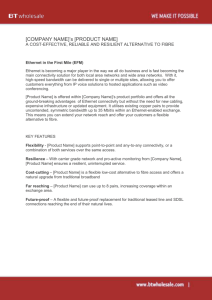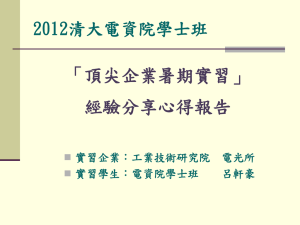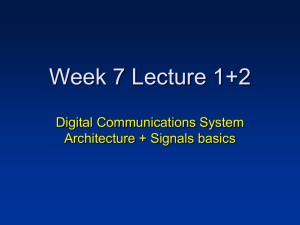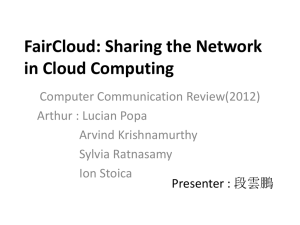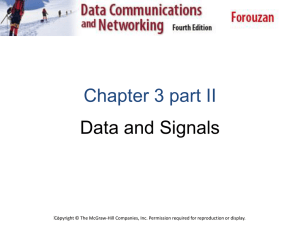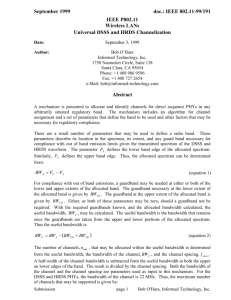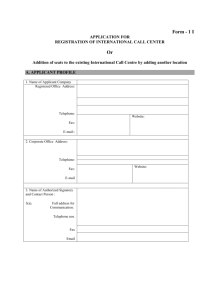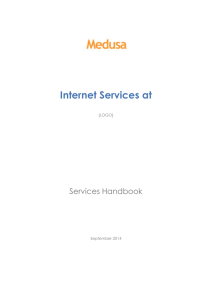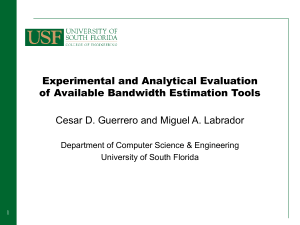BreadCrumbs: Forecasting Mobile Connectivity
advertisement
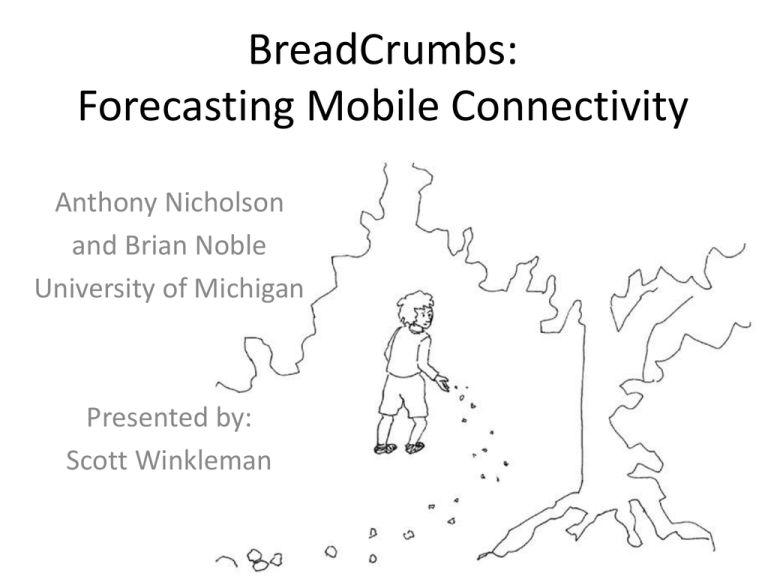
BreadCrumbs: Forecasting Mobile Connectivity Anthony Nicholson and Brian Noble University of Michigan Presented by: Scott Winkleman Premise • Humans are creatures of habit • Why not take advantage of this idea to predict the future connectivity of a particular user? • BreadCrumbs put this idea into action by tracking your movement and developing connectivity forecasts. • This allows your device’s OS or individual applications to preserve battery life by waiting until a later moment to transfer data Introduction • Current mobile devices run on a wide range of connections, which may be sparse and unreliable • BreadCrumbs looks at the derivative of connectivity to predict future available connections • Mobility model connectivity forecast • GOAL: Defer less time sensitive work if a better connection is available in the near future Background: Determining AP Quality • Currently: – Select the AP with the strongest signal • Virgil: – Connects to reference servers to determine (for each AP): • Downstream bandwidth • Whether it blocks certain services • Estimated latency – 22-100% increase in detection of AP with usable connection • BreadCrumbs: – Adapted Virgil, detects: • Downstream bandwidth, upstream bandwidth, estimated latency – Shorten the process and receive more practical information Background: Estimating Client Location • GPS • Place Lab – Wardriving – Location of AP and GSM – As described in previous papers Predicting Future Mobility • Use second-order Markov Model for state locations • States include previous and current GPS: • GPS locations rounded to the nearest thousandth (= 110x80m in Ann Arbor) • Takes readings every τ seconds • Hubs • Stored Locally Forecasting Future Conditions • AP Quality Database needed – Tags all AP quality results to the current location • Connectivity Forecast = mobility model + AP quality database – Requires three arguments: • Current state in mobility model • Integer number of steps in the future • Desired network quality (i.e. download, upload, latency) • Forecast is the weighted sum of the bandwidth at all potential next states – Calculated recursively if steps > 1 Example • Expected bandwidth one step in the future is the best observed bandwidth in each state multiplied by the probability of going to that state next. • Multiple states is recursive: Scanning Thread • Prototype on Linux uses two threads • Scanning thread scans for APs – Determines GPS coordinates using Place Labs – Determines quality of each AP – Updates mobility model with new probability based on current state • Performed every τ seconds (BC uses 10) Application Interface • The second thread acts as the liaison between applications and BreadCrumbs • Two criteria are required: – Choice of downstream, upstream, latency – Integer number of seconds in the future • Number of seconds (s) is converted to steps: (s-(time left until next scan))/τ Ex: Requested 25 sec in future at t=9… (25-(10-9))/10 = 24/10 = 2.4 3 steps Methodology • Tested for two weeks every 10 seconds during the day – week 1: training, week 2: testing • Used detected APs and Place Lab database to determine location and calculated quality for new APs • Results: – Only 17% APs were open (non-zero downstream) – But 55% of locations had a usable AP Accuracy – Location Prediction • Compared the predicted future location with the actual destination • Decent accuracy for k=1, but degrades • Thought: state prediction doesn’t matter as much as bandwidth prediction • Binary connectivity = bandwidth available, even if the location was incorrectly guessed Accuracy – Bandwidth Prediction • Compared predicted vs. actual bandwidth • Within 10 KB/s over 50% of time • Within 50 KB/s over 80% of time Application: Opportunistic Writeback • Content uploaded from device to server • • • • – Ex: photos to flickr Determine the best current upstream bandwidth Predict 10, 20, 30 seconds in future Wait if future is better Radio active 45% less often Application: Radio Deactivation • Deactivate radio usage to save power • Three algorithms: – Prediction-unaware: • If no bandwidth for 30 sec, sleep for 60 sec – BreadCrumbs: • Sleep when no APs w/in 30 secs • keep checking model – Baseline, always on available Application: Phone data network vs. WiFi • Offload data transfer from EDGE/3G to Wi-Fi • Two algorithms: – Prediction-unaware: • Use Wi-Fi when downstream > EDGE – BreadCrumbs: • Use EDGE when Wi-Fi downstream < EDGE during next 30 secs. Overhead Criticism / Future Work • Localization / GPS energy & efficiency • Unencrypted, open AP availability? • Longer training period better results? – AP expiration? • Uses best bandwidth in 80x110m area • Time of day/week • Ease to add into current applications Thank you!
